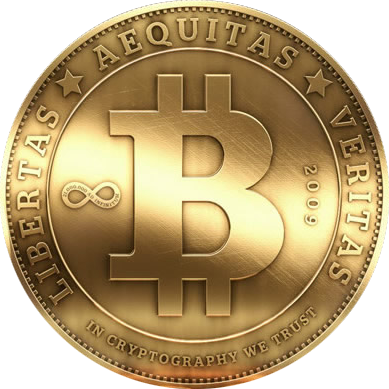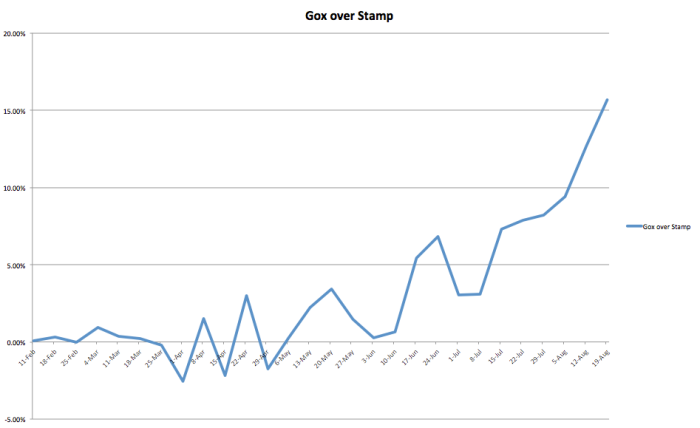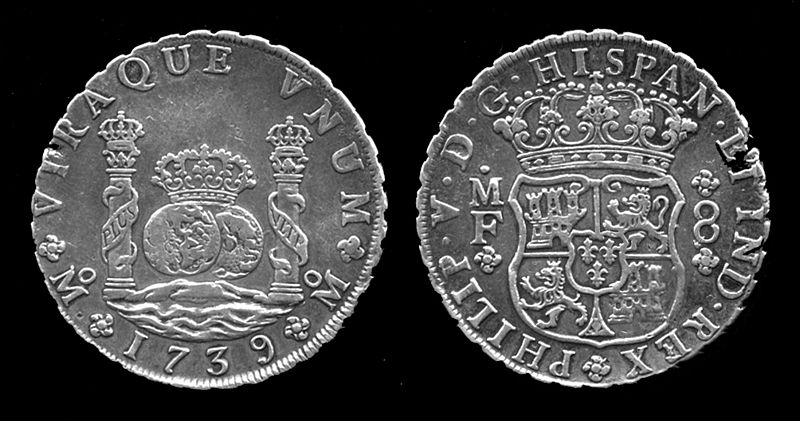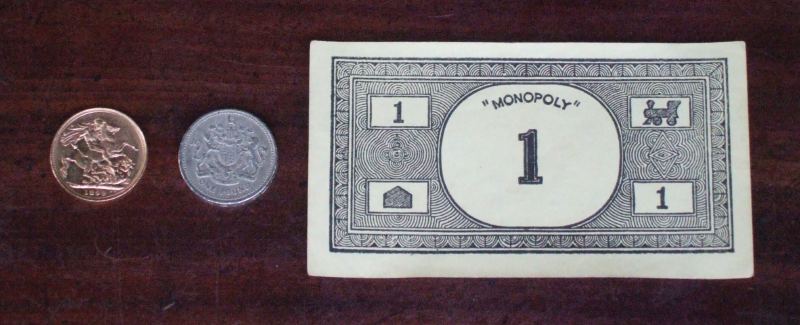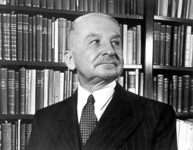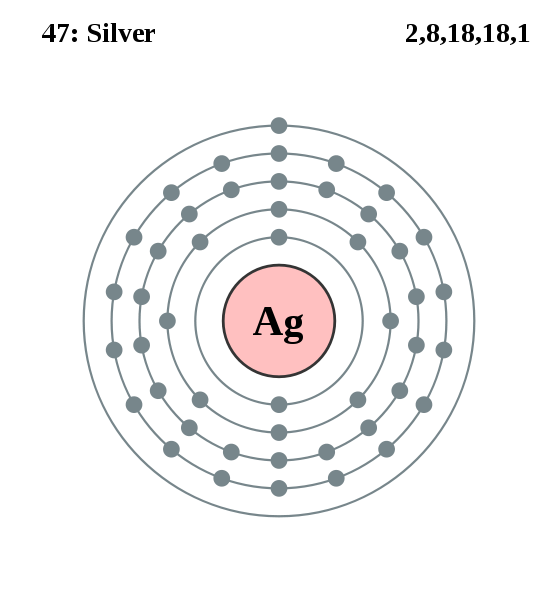First impression: This is an outstanding example of a speech, with many inspiring messages and positive statements. The negatives consist almost entirely of eloquent repetitions of popular fallacies of economic theory and history. We will be forced, then, to leave the overall good feelings aside and examine the content.
I will begin with a summary of key positives and negatives. When I use the words “standard” and “conventional,” below it indicates my impression that these are errors that are not particular to Mr. Obama, but rather ones he shares with a vastly misguided contemporary intellectual consensus.
Positives:
- General tone of friendship and cooperation with other nations
- Inspiring references to values of honesty, responsibility, and hard work
- References to positive values illustrated by standard images of US history
- Tone and style appeared to match content; no obvious contradictions between content and presentation
Negatives:
- Standard failure to understand the meaning of large sections of the Constitution
- Confusion between values as expressed in private, voluntary, or entrepreneurial actions with the values of collective state action expressed through coercively orchestrated government programs.
- The use of the bait-and-switch to rhetorically draw on the good name of the former, and then quickly shift to advocating the latter.
- Standard failure to understand the inherent self-defeating effects of government programs (the hubris that government programs actually can accomplish whatever technocrats decide they want to see)
- Implication that those who “sacrificed” in the past thereby justified all of the causes for which they killed and were killed in military adventures, the pure justice of which should in no cases be questioned.
Next, I reproduce the full text of the speech and comment on particular passages. In the course of this discussion, I offer links to relevant books.
My fellow citizens:
I stand here today humbled by the task before us, grateful for the trust you have bestowed, mindful of the sacrifices borne by our ancestors. I thank President Bush for his service to our nation, as well as the generosity and co-operation he has shown throughout this transition.
The 10th word of the speech is "us". This subtly begins to establish the discourse of collective action orchestrated through coercive bureaucracy, and starts establishing the mythology that whatever the administration does in the future will be somehow what you and I “do” ourselves.
Forty-four Americans have now taken the presidential oath. The words have been spoken during rising tides of prosperity and the still waters of peace. Yet, every so often the oath is taken amidst gathering clouds and raging storms. At these moments, America has carried on not simply because of the skill or vision of those in high office, but because We the People have remained faithful to the ideals of our forbearers, and true to our founding documents.
While one wants to sympathize with and be inspired by the young President at this point in the speech, this last statement is almost physically painful to people who are able to understand what the Constitution actually says. The founding document has been so thoroughly violated by the Federal Government, the “interpretations” of the Supreme Court, and the outright usurpations of the Office of the President as to be in force virtually in name only.
Antidotes to such delusions include Restoring the Lost Constitution: The Presumption of Liberty and Who Killed the Constitution? The Fate of American Liberty from World War I to George W. Bush.
So it has been. So it must be with this generation of Americans.
That we are in the midst of crisis is now well understood. Our nation is at war, against a far-reaching network of violence and hatred. Our economy is badly weakened, a consequence of greed and irresponsibility on the part of some, but also our collective failure to make hard choices and prepare the nation for a new age. Homes have been lost; jobs shed; businesses shuttered. Our health care is too costly; our schools fail too many; and each day brings further evidence that the ways we use energy strengthen our adversaries and threaten our planet.
These are all great examples of what is wrong. The solutions to these issues are clear. However, the solutions the administration plans to implement do not address the actual causes of these problems and the proposed programs are likely to make each problem worse than it otherwise might have been.
The root of the economic problem is the system of fractional reserve banking, government-orchestrated central planning of money and credit, and cartelization of the banking system. The definitive treatment of this issue is Money, Bank Credit, and Economic Cycles. Shorter treatments include What Has Government Done to Our Money?/Case for a 100 Percent Gold Dollar and The Ethics of Money Production.
As for war, the United States has spent decades, in stark violation of the Constitution and its principles, occupying and otherwise meddling with the countries in which these networks mentioned have developed. See The Revolution: A Manifesto on this issue (as well as good comments on healthcare and many other issues). For educational issues, a good foundation is the classic Education and the State.
These are the indicators of crisis, subject to data and statistics. Less measurable but no less profound is a sapping of confidence across our land - a nagging fear that America's decline is inevitable, and that the next generation must lower its sights.
This is a well-founded fear in view of the state of contemporary economic literacy and the direction of most policy trends. The only question is whether people can manage to continue to prosper in some measure even in the face of massive taxation, inflation, war, strangling regulation, and all the rest that the state does to keep us down.
Today I say to you that the challenges we face are real. They are serious and they are many. They will not be met easily or in a short span of time. But know this, America - they will be met.
On this day, we gather because we have chosen hope over fear, unity of purpose over conflict and discord.
On this day, we come to proclaim an end to the petty grievances and false promises, the recriminations and worn out dogmas, that for far too long have strangled our politics.
Worn-out dogmas is a perfect description of the absurd and ancient economic theories underlying the entire economic program being proposed by the new administration, which is in large part a continuation of the policies of the previous administration with some tweaking. This starts with the idea that “spending” can in any way create prosperity. This is probably one of the oldest and most enduring pieces of non-sense in the history of economic thought. Incredibly, even today, you can read plenty of such material in newspapers each week from prominent "economists."
We remain a young nation, but in the words of Scripture, the time has come to set aside childish things. The time has come to reaffirm our enduring spirit; to choose our better history; to carry forward that precious gift, that noble idea, passed on from generation to generation: the God-given promise that all are equal, all are free, and all deserve a chance to pursue their full measure of happiness.
In reaffirming the greatness of our nation, we understand that greatness is never a given. It must be earned. Our journey has never been one of short-cuts or settling for less. It has not been the path for the faint-hearted - for those who prefer leisure over work, or seek only the pleasures of riches and fame.
Rather, it has been the risk-takers, the doers, the makers of things - some celebrated but more often men and women obscure in their labor, who have carried us up the long, rugged path towards prosperity and freedom.
These are nice references. Interestingly, however, when eliciting emotional images of positive values, the speaker refers to people operating on their own initiative in the private sector. We see repeated use of such images in the bait-and-switch style rhetoric that ensues.
For us, they packed up their few worldly possessions and travelled across oceans in search of a new life.
For us, they toiled in sweatshops and settled the West; endured the lash of the whip and ploughed the hard earth.
For us, they fought and died, in places like Concord and Gettysburg; Normandy and Khe Sahn.
Notice the smooth switch from positive, private-sector, individual values and actions to government-orchestrated wars. We start with people migrating to a new country—a country where, at the time, government was far less intrusive and the tax burden far lower than in those countries from which the immigrants left. We end with instances of mass warfare and destruction by military machines that were in all cases staffed at least partly through blatantly unconstitutional programs of involuntary servitude (the draft and much more), and financed through involuntary collection of wealth through taxation, debt, and inflation.
Time and again these men and women struggled and sacrificed and worked till their hands were raw so that we might live a better life. They saw America as bigger than the sum of our individual ambitions; greater than all the differences of birth or wealth or faction.
Did they see America this way? Is that why they worked hard? The speaker makes a massive empirical historical claim about the motivations of millions of people with the apparent aim of eliciting a certain type of emotion—a collective pride. But is the actual claim true or misleading? What did great, great granddad actually think about what he was doing?
Most migrants migrate because in their opinion at the time, they expect their life and sometimes the lives of their offspring to be better than would have been the case in the country from which they depart. They can leave for any blend of reasons, including perceived income potential, greater religious freedom, ease of starting a business, more space, lower taxes, fewer regulations to hamper productive business, and even better climate. These are all personal reasons, which have little to do with the various collectivist schemes and visions of politicians. See for example the fascinating and sweeping global historical work of Thomas Sowell in Migrations and Cultures: A World View and the four other volumes by him in the series of which it is a part.
This is the journey we continue today. We remain the most prosperous, powerful nation on Earth. Our workers are no less productive than when this crisis began. Our minds are no less inventive, our goods and services no less needed than they were last week or last month or last year.
Our capacity remains undiminished.
These are very nice statements, and true. The “real economy” is not, indeed, the main issue. The issue is the fractional reserve banking system with central planning of money supply and interest rates. It is this system that undermines the efforts of all of us to plan and save. Our savings are depleted by constant currency depreciation due to inflationism. Our long-term business plans are thwarted due to malinvestments made during bubble periods on the basis of false economic signals created by government manipulations of money and credit and the fractional-reserve practices of the government-cartelized banking system.
There is no cause of major recurring economic cycles of boom and bust other than artificial credit expansion unbacked by real savings. The cause is always the same and the result is always the same, even though mainstream economists, like befuddled witch doctors during a plague, seem entirely unable to explain what is happening.
But our time of standing pat, of protecting narrow interests and putting off unpleasant decisions - that time has surely passed. Starting today, we must pick ourselves up, dust ourselves off, and begin again the work of remaking America.
For everywhere we look, there is work to be done. The state of the economy calls for action, bold and swift, and we will act - not only to create new jobs, but to lay a new foundation for growth. We will build the roads and bridges, the electric grids and digital lines that feed our commerce and bind us together.
Here is some nice inspiration. Notice that it is based on images of personal work and dedication and metaphors of the bold business venture. But then the bait-and-switch comes through: it soon becomes clear that “we” is not you and I working productively to generate goods and services that other people may value enough to buy, but rather "we" is the coercively financed bureaucratic administration of the state and whatever it will actually do with the money it extracts from hapless citizens.
We will restore science to its rightful place, and wield technology's wonders to raise health care's quality and lower its cost.
I can see a positive note here, in that we are rebelling a bit against a certain primitive anti-scientific irrationalism in the previous administration. However, the negatives quickly prevail. This statement represents the classic hubris of the technocrat, which is to imagine that the state can “do things” with technology through "policy" that will prove economically advantageous for real people as a whole.
However, the only power and capability the state has is to take wealth from some people and give to others. It cannot produce anything. It can only distort and redistribute. It can only advantage some at the expense of others. The issue is always economics; technology is secondary. There is no mechanism by which the state can make economically intelligent decisions about what technologies to adopt, or how, when, where, and to what extend to employ them. This is precisely the error of central planning exposed by Ludwig von Mises most thoroughly in his classic book Socialism.
We will harness the sun and the winds and the soil to fuel our cars and run our factories. And we will transform our schools and colleges and universities to meet the demands of a new age. All this we can do. And all this we will do.
Now, there are some who question the scale of our ambitions - who suggest that our system cannot tolerate too many big plans. Their memories are short.
For they have forgotten what this country has already done; what free men and women can achieve when imagination is joined to common purpose, and necessity to courage.
Yet again comes the ever more striking bait-and-switch. Just as before, this method raises positive emotive pictures of what are fundamentally private, individual and entrepreneurial values of hard work, innovation, and creation of better ways of doing things. It switches imperceptibly to the false implication that such values can somehow by applied collectively or encouraged through bureaucratically orchestrated and coercively financed activities. This is sheer delusion.
What the cynics fail to understand is that the ground has shifted beneath them - that the stale political arguments that have consumed us for so long no longer apply. The question we ask today is not whether our government is too big or too small, but whether it works - whether it helps families find jobs at a decent wage, care they can afford, a retirement that is dignified.
Well put. Unfortunately, in almost every case, government programs harm us, and this emphatically includes harming the very groups that the policies are advertised to help. Perhaps here would be the place to read Henry Hazlitt’s wonderfully accessible classic Economics in One Lesson. This little book demolishes in clear and simple terms one interventionist fallacy after another by showing how government interventions billed has helping people actually harm the very people targeted for “help,” while certainly also harming the rest of us at the same time.
Where the answer is yes, we intend to move forward. Where the answer is no, programs will end. And those of us who manage the public's dollars will be held to account - to spend wisely, reform bad habits, and do our business in the light of day - because only then can we restore the vital trust between a people and their government.
This is just an outstanding sentiment. If only reality were not so unforgiving. Unfortunately, such assessments of "success" are often made by the same bureaucrats and special interests who run these programs. They do not tend to produce reports advocating the termination of their own departments and pet programs. As history has repeatedly shown, this leads to no end of intellectual deception to produce indications of “policy success” and to suppress or systematically ignore evidence of “failure” or of costs outweighing benefits (to the iffy extent that costs and benefits can be calculated at all in the context of bureaucratic operations).
Humans do not tend to do well when they are institutionally the judges in their own cases. This is one reason why the most reliable mechanism for weeding out what works from what doesn’t is to allow people who want to use services to purchase them (including purchasing them voluntarily on behalf of others), and preserving for each the freedom to choose not to pay for any service or product. What kind of a system is that? The freedom to buy or not to buy things with your own money? What shall we call this most effective mechanism for promoting the truly useful and helpful and discouraging the less useful and the less helpful?
Nor is the question before us whether the market is a force for good or ill. Its power to generate wealth and expand freedom is unmatched, but this crisis has reminded us that without a watchful eye, the market can spin out of control - and that a nation cannot prosper long when it favors only the prosperous.
Ah, the market. However, this "spinning out of control" is not what the market has done. It is rather precisely what the government-cartelized fractional reserve banking system with central planning of money supply and interest rates has done. It is this latter decidedly non-market system that is responsible for economic crises, and which must be eliminated. One of the few fields in which there has emphatically been no semblance of a pure market system is the field of money and banking, which kings and emperors started taking over and manipulating for their own profit centuries ago. Recurring economic booms and crises are due directly to this entire category of inherently corrupt practices and institutions. It is therefore by no means the “market” that has spun out of control; it is precisely the state’s self-financing interventions in money and banking that are the source of both economic cycles and the permanent ongoing devaluation of currencies.
The success of our economy has always depended not just on the size of our Gross Domestic Product, but on the reach of our prosperity; on our ability to extend opportunity to every willing heart - not out of charity, but because it is the surest route to our common good.
As for our common defense, we reject as false the choice between our safety and our ideals. Our Founding Fathers, faced with perils we can scarcely imagine, drafted a charter to assure the rule of law and the rights of man, a charter expanded by the blood of generations. Those ideals still light the world, and we will not give them up for expedience's sake. And so to all other peoples and governments who are watching today, from the grandest capitals to the small village where my father was born: know that America is a friend of each nation and every man, woman, and child who seeks a future of peace and dignity, and that we are ready to lead once more.
Outstanding statements and messages—setting a positive and firm tone.
Recall that earlier generations faced down fascism and communism not just with missiles and tanks, but with sturdy alliances and enduring convictions. They understood that our power alone cannot protect us, nor does it entitle us to do as we please. Instead, they knew that our power grows through its prudent use; our security emanates from the justness of our cause, the force of our example, the tempering qualities of humility and restraint.
We are the keepers of this legacy. Guided by these principles once more, we can meet those new threats that demand even greater effort - even greater co-operation and understanding between nations. We will begin to responsibly leave Iraq to its people, and forge a hard-earned peace in Afghanistan.
With old friends and former foes, we will work tirelessly to lessen the nuclear threat, and roll back the specter of a warming planet. We will not apologize for our way of life, nor will we waver in its defense, and for those who seek to advance their aims by inducing terror and slaughtering innocents, we say to you now that our spirit is stronger and cannot be broken; you cannot outlast us, and we will defeat you.
Nicely put in general. However, as for the warming planet: anthropogenic (man-made) global warming is for the most part a hoax from top to bottom. It is not coincidentally a hoax that is largely fueled by government-funded research. Any research supporting the expansion of state power is naturally quite popular with state institutions and attracts funding and fame, and research that does not support expansions of state power—not so much. Many, many climate scientists do not support the anthropogenic global warming hypothesis and argue that the evidence is much stronger for other interpretations of the evidence. This rarely makes headlines, though.
A nice solid antidote to conventional global warming theology in one book is a review of the scientific evidence regarding climate change research, Unstoppable Global Warming: Every 1,500 Years. In a nutshell, 1) many claims of global warming are systematically exaggerated through biased selection and exclusion of evidence and other flawed data-gathering mechanisms, 2) computerized climate prediction models are largely bogus and fail repeatedly and utterly to predict reality, 3) extremely strong physical geological evidence of numerous overlapping types going back millions of years show a solar-induced warming and cooling cycle of approximately 1,500 years, the continuation of which on trend explains the modest actual global warming that has been scientifically observed, and 4) on balance, global warming is better for the environment of living organisms, including weather stability, than global cooling is.
For we know that our patchwork heritage is a strength, not a weakness. We are a nation of Christians and Muslims, Jews and Hindus - and non-believers. We are shaped by every language and culture, drawn from every end of this Earth; and because we have tasted the bitter swill of civil war and segregation, and emerged from that dark chapter stronger and more united, we cannot help but believe that the old hatreds shall someday pass; that the lines of tribe shall soon dissolve; that as the world grows smaller, our common humanity shall reveal itself; and that America must play its role in ushering in a new era of peace.
Nice sentiments; well expressed.
To the Muslim world, we seek a new way forward, based on mutual interest and mutual respect. To those leaders around the globe who seek to sow conflict, or blame their society's ills on the West - know that your people will judge you on what you can build, not what you destroy.
To those who cling to power through corruption and deceit and the silencing of dissent, know that you are on the wrong side of history; but that we will extend a hand if you are willing to unclench your fist.
To the people of poor nations, we pledge to work alongside you to make your farms flourish and let clean waters flow; to nourish starved bodies and feed hungry minds. And to those nations like ours that enjoy relative plenty, we say we can no longer afford indifference to suffering outside our borders; nor can we consume the world's resources without regard to effect. For the world has changed, and we must change with it.
The leading changeable causes of poverty are the absence of secure property rights and legal predictability, combined with stifling economic regulations that render productive entrepreneurial activity and trade virtually impossible. Addressing these conditions is the best way to help. Creating them in the advanced countries is the best way to hobble them, as we are seeing. Extracting money from (still) rich-country citizens through taxation and shipping it to prop up corrupt regimes, helping them buy weapons with which to kill their political opponents (so-called foreign aid) is counterproductive. The most helpful policy for developed countries to take with regard to emerging and poor economies is to lift any and all tariffs and all restrictions on trade, in particular, and possibly also on migration. Free trade and interchange with all; entangling alliances with none is the foundational foreign policy of the United States (though one that was not long practiced due to the influence of Hamiltonians, et. al. See Hamilton's Curse: How Jefferson's Archenemy Betrayed the American Revolution--and what it Means for America Today).
As we consider the road that unfolds before us, we remember with humble gratitude those brave Americans who, at this very hour, patrol far-off deserts and distant mountains. They have something to tell us, just as the fallen heroes who lie in Arlington whisper through the ages. We honor them not only because they are guardians of our liberty, but because they embody the spirit of service; a willingness to find meaning in something greater than themselves. And yet, at this moment - a moment that will define a generation - it is precisely this spirit that must inhabit us all.
This is an emotional and hallowed topic, rendering it virtually immune to intelligent discussion and honest historical analysis. Many of these people were inducted involuntarily into foreign military adventures that did not actually further the interests and security of the United States. The country’s deceitfully engineered and propaganda-fueled entry into World War I prolonged and worsened a classic European war that was almost over at the time of the US intervention. This widening and extension of the war set up the conditions for a dishonest one-sided post-war economic exploitation of Germany, principally by Britain, which helped set up the disastrous economic conditions and hyperinflation that formed the desperate backdrop to the democratic election of Hitler and the delayed continuation of World War I, which we call World War II.
Read, for example, the collection of essays, The Costs of War: America's Pyrrhic Victories, to get started on the long road to understanding just how deeply we are deceived by glorifying histories of the state’s wars.
For as much as government can do and must do, it is ultimately the faith and determination of the American people upon which this nation relies. It is the kindness to take in a stranger when the levees break, the selflessness of workers who would rather cut their hours than see a friend lose their job, which sees us through our darkest hours. It is the firefighter's courage to storm a stairway filled with smoke, but also a parent's willingness to nurture a child, that finally decides our fate.
Here we go again with the bait-and-switch. These inspiring images are mainly of privately conducted, voluntary actions that the state did not coerce out of its citizens. It is indeed a tribute to the people that they are able to function and succeed at all in the face of all the destruction, distortion, and unfathomably massive taxation and micromanagement that the state inflicts.
Our challenges may be new. The instruments with which we meet them may be new.
The challenges are in no way new. The largest one is just the latest manifestation of ancient problems that date in protean form from the early flirting with fractional reserve banking practices in 14th century Florence. As for the "instruments" now proposed, they are merely the latest variations of policies based on ancient economic superstitions—fallacies that owe their survivability not to their truth, but to their utility in promoting the interests of the state, its favored special interests, and its lapdog “economists” and journalists, at the expense of everyone else.
But those values upon which our success depends - honesty and hard work, courage and fair play, tolerance and curiosity, loyalty and patriotism - these things are old. These things are true.
This was a nice moment of the speech in emotional terms. There was some honest recognition of real values from the past—a legacy. If we could only include on this list of values: not taking other people’s money (taxation) and not micromanaging what they can do on threat of imprisonment (regulation), we would be much further along. These latter items don’t fit with the values of fair play, tolerance, or honesty.
They have been the quiet force of progress throughout our history. What is demanded then is a return to these truths. What is required of us now is a new era of responsibility - a recognition, on the part of every American, that we have duties to ourselves, our nation, and the world, duties that we do not grudgingly accept but rather seize gladly, firm in the knowledge that there is nothing so satisfying to the spirit, so defining of our character, than giving our all to a difficult task.
This is the price and the promise of citizenship.
Notice the non-specificity of the “duties” now. I assume that the duties may include continuing to hand over more or less half of our incomes to the state or go to jail. Other duties may include facing additional strangling regulations on workplaces and the operation of productive enterprises, living with the criminalization of the production of incandescent light bulbs, going off to the next state-aggrandizing and new-enemy-manufacturing war of the week, or watching our sons, daughters, and friends do so. What “we” the citizens will actually do is fund a multitude of programs, transfers, and invasions, almost all of which are deeply misguided, wasteful, and blatantly unconstitutional.
This is the source of our confidence - the knowledge that God calls on us to shape an uncertain destiny.
This is the meaning of our liberty and our creed - why men and women and children of every race and every faith can join in celebration across this magnificent mall, and why a man whose father less than 60 years ago might not have been served at a local restaurant can now stand before you to take a most sacred oath.
This definitely represents concrete progress. This was a cultural transformation conducted over years. It would have happened much sooner without the state and its enforcement of legally mandated discrimination, and to this day laws that enable bigoted employers to practice arbitrary discrimination without themselves suffering what would otherwise be the natural economic losses that would stem from it. See Walter Block’s new Labor Economics from a Free Market Perspective.
So let us mark this day with remembrance, of who we are and how far we have traveled. In the year of America's birth, in the coldest of months, a small band of patriots huddled by dying campfires on the shores of an icy river. The capital was abandoned. The enemy was advancing. The snow was stained with blood. At a moment when the outcome of our revolution was most in doubt, the father of our nation ordered these words be read to the people:
"Let it be told to the future world ... that in the depth of winter, when nothing but hope and virtue could survive ... that the city and the country, alarmed at one common danger, came forth to meet [it]."
The American revolutionaries fought against the imposition of various piddly taxes of a few percent on a few selected items! They fought against the arbitrary power of an unchecked executive (who was, at the time, called a "King" rather than a "President").
The modern American executive branch, headed now by Mr. Obama himself, has unimaginably vaster powers to tax, regulate, imprison, and kill than King George III would ever have begun to imagine or fathom. The Declaration of Independence provides a list of grievances that are truly small-time whining compared to the comparable modern list of the usurpations and abuses of the United States Federal government.
The only responsible course for a holder of this office who wishes to protect the Constitution and the ideals of the American revolutionaries would be to immediately begin issuing executive orders reversing virtually all assumptions of power taken by past presidents and dismantling most executive branch departments. Congressman Ron Paul laid out precisely such a course in his 2008 campaign for president.
America. In the face of our common dangers, in this winter of our hardship, let us remember these timeless words. With hope and virtue, let us brave once more the icy currents, and endure what storms may come. Let it be said by our children's children that when we were tested we refused to let this journey end, that we did not turn back nor did we falter; and with eyes fixed on the horizon and God's grace upon us, we carried forth that great gift of freedom and delivered it safely to future generations.
(end)
I found this speech honestly inspiring on a personal level. My role, what I can do, is contribute to economic and historical education in this world. False economic ideas lead well-meaning people to do harm that they do not understand they are doing through their fanciful reliance on the coercive instrument of the state to attempt to “manage” the rest of us.

